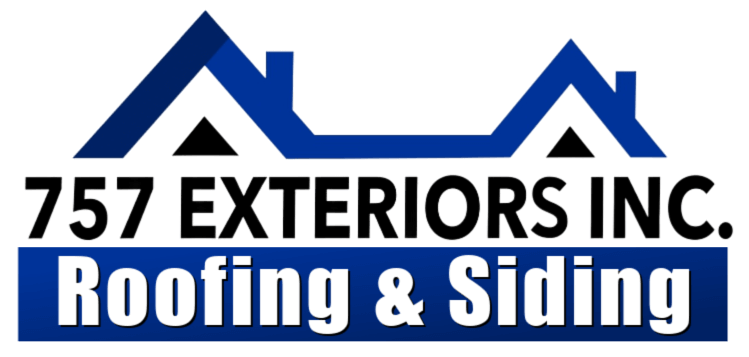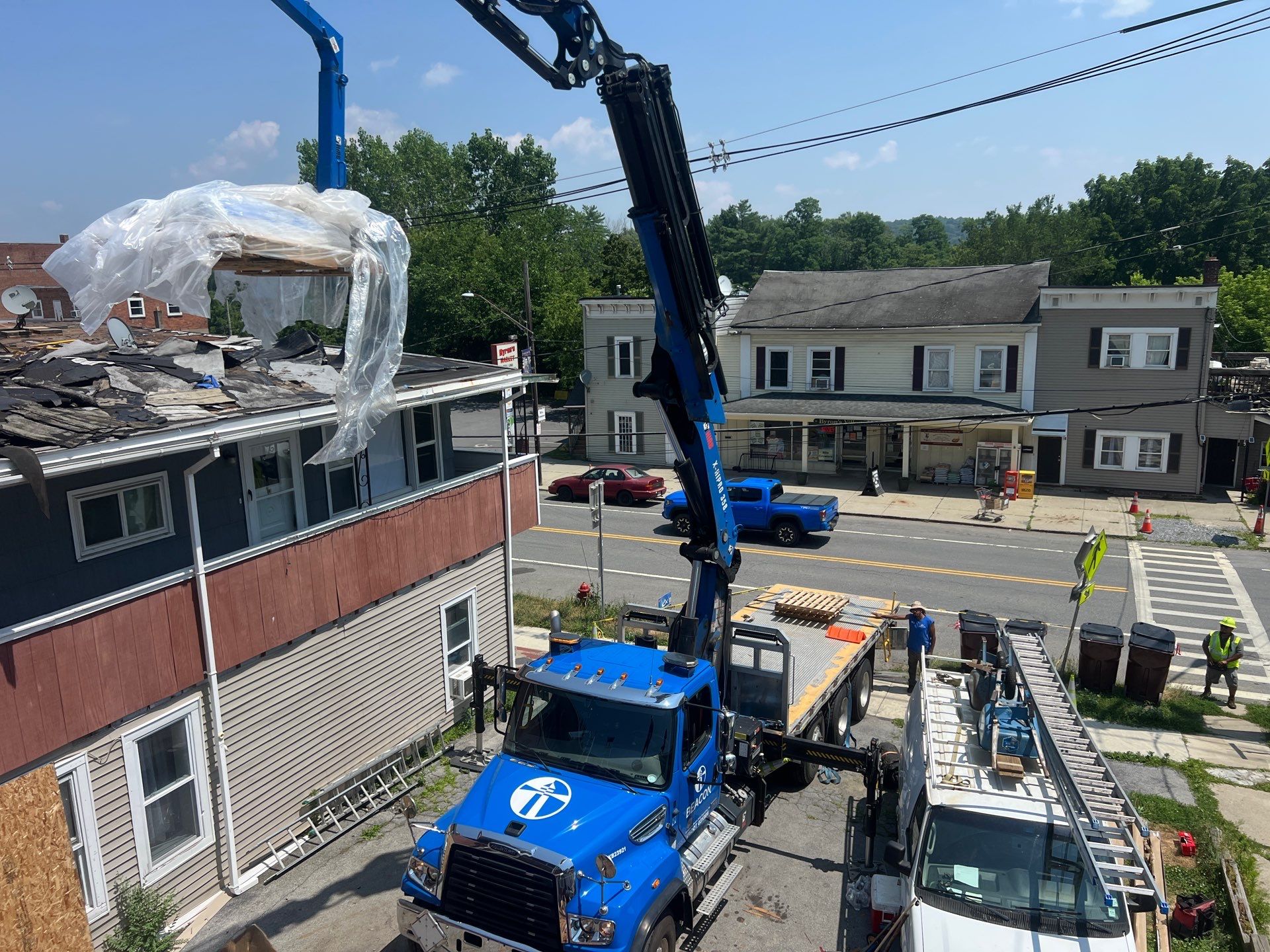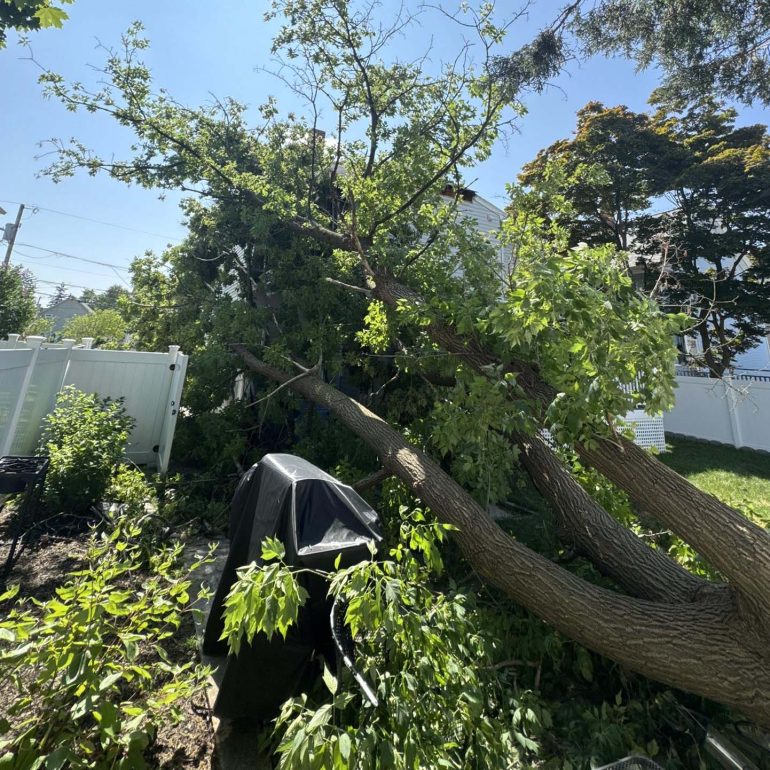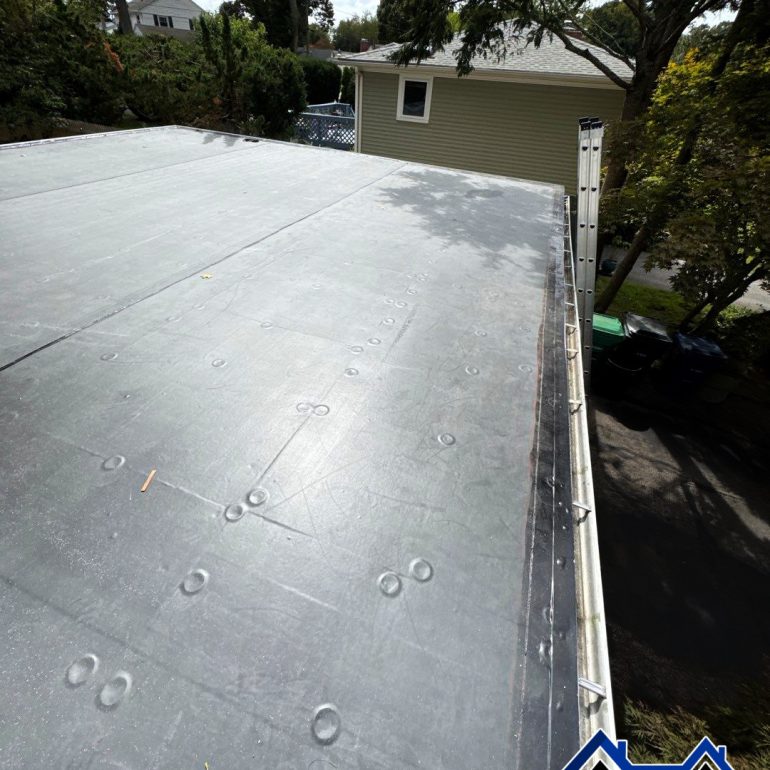Commercial roofing safety remains one of the most critical aspects of construction work, with roofing consistently ranking among the highest-risk occupations according to OSHA statistics. Understanding and implementing proper safety protocols isn’t just about compliance—it’s about protecting lives, preventing costly accidents, and ensuring project success.
When it comes to maintaining the highest standards of commercial roofing safety, property owners and contractors in Cranston, RI, and surrounding areas rely on experienced professionals who prioritize both quality workmanship and worker protection. 757 Exteriors INC, serving the Cranston community, has built its reputation on delivering exceptional roofing, siding, and gutter services while maintaining an unwavering commitment to safety protocols that exceed industry standards.
Understanding Commercial Roofing Hazards
Commercial roofing presents unique challenges that differ significantly from residential projects. The scale, complexity, and environmental factors create multiple risk scenarios that require specialized safety approaches.
Primary Risk Factors
Falls represent the leading cause of roofing-related injuries, accounting for approximately 34% of construction fatalities according to recent OSHA data. These incidents typically occur due to:
Equipment-Related Hazards:
- Improper ladder placement and usage
- Faulty or inadequate fall protection systems
- Defective safety harnesses and lanyards
- Insufficient guardrail installations
Environmental Dangers:
- Weather-related slippery conditions
- High wind exposure on elevated surfaces
- Temperature extremes affecting material handling
- Poor visibility during certain weather conditions
The complexity of commercial roofing systems also introduces electrical hazards, particularly when working near HVAC systems, lighting installations, or during storm damage repairs. Understanding these risks forms the foundation of effective safety planning.
For property owners seeking professional guidance on safety-compliant commercial roofing solutions, partnering with experienced contractors ensures both worker safety and project quality. Professional teams understand how different roofing materials and installation methods impact safety requirements.
Essential Safety Equipment and Protocols
Proper safety equipment serves as the first line of defense against roofing hazards. Commercial roofing projects require comprehensive safety gear that meets or exceeds OSHA standards.
Personal Protective Equipment (PPE)
Fall Protection Systems:
- Full-body harnesses with shock-absorbing lanyards
- Self-retracting lifelines for continuous protection
- Positioning devices for hands-free work
- Rescue equipment for emergency situations
Additional Safety Gear:
- Non-slip footwear with ankle support
- Hard hats rated for construction environments
- Safety glasses and face shields
- High-visibility clothing for team coordination
💡 Expert Tip: Commercial Roofing Safety
Always conduct a pre-shift safety meeting before beginning work. Review weather conditions, identify potential hazards specific to that day’s tasks, and ensure all team members understand their roles in maintaining safety protocols. This simple practice can prevent 70% of preventable roofing accidents.
Safety System Implementation
Implementing comprehensive safety systems requires careful planning and proper installation. Temporary guardrails, safety net systems, and warning line systems each serve specific purposes depending on the roof configuration and work requirements.
The effectiveness of these systems depends heavily on proper installation and regular inspection. Professional roofing inspection services can identify potential safety concerns before they become hazardous, ensuring both worker safety and system integrity.
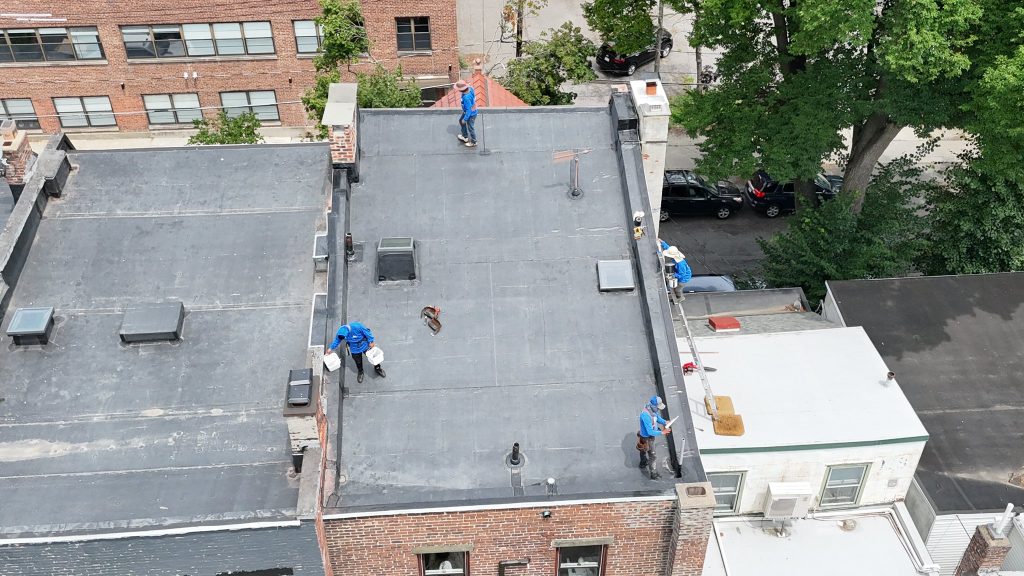
OSHA Compliance Requirements
Understanding OSHA regulations forms the backbone of any effective commercial roofing safety program. These requirements aren’t suggestions—they’re legally mandated standards designed to protect workers and ensure industry accountability.
Key OSHA Standards for Commercial Roofing
Fall Protection Requirements:
- Mandatory fall protection for work at heights exceeding 6 feet
- Proper anchor point installation and testing procedures
- Regular inspection schedules for all safety equipment
- Documented training records for all personnel
Training and Certification Standards:
- Competent person designation and training
- Worker safety orientation requirements
- Ongoing education and skill updates
- Emergency response training protocols
OSHA’s emphasis on documentation means that safety compliance extends beyond equipment and training to include comprehensive record-keeping. This documentation proves invaluable during inspections and helps identify trends that could indicate systemic safety issues.
The complexity of OSHA compliance often requires professional guidance, particularly for larger commercial projects. Companies specializing in commercial roofing understand these requirements intimately and can help ensure full compliance while maintaining project efficiency.
Commercial Roofing Safety Comparison
| Safety Measure | Standard Practice | Best Practice | Impact |
|---|---|---|---|
| Fall Protection | Basic harness system | Multi-point protection system | 85% reduction in fall injuries |
| Training Frequency | Annual training | Quarterly updates | 60% better compliance |
| Equipment Inspection | Weekly checks | Daily pre-use inspection | 90% early problem detection |
| Weather Protocols | Basic guidelines | Real-time monitoring | 75% fewer weather incidents |
Weather-Related Safety Considerations
Weather conditions significantly impact commercial roofing safety, requiring adaptive strategies and flexible scheduling to protect workers while maintaining project progress.
Critical Weather Factors
Temperature Extremes:
- Heat stress prevention during summer months
- Cold weather protection and material considerations
- Thermal expansion effects on equipment and materials
- Hydration and rest schedule adjustments
Precipitation and Moisture:
- Immediate work stoppage protocols for active precipitation
- Post-rain surface assessment procedures
- Drying time requirements before resuming work
- Slip-resistant surface treatments and applications
Wind conditions deserve particular attention in commercial roofing safety planning. OSHA recommends suspending roofing work when sustained winds exceed 25 mph or gusts reach 35 mph. However, commercial buildings often create unique wind patterns that can exceed these thresholds even in moderate conditions.
Proper planning includes monitoring weather forecasts and having contingency plans for sudden weather changes. This proactive approach protects workers while preventing costly delays caused by inadequate preparation.
Whether dealing with TPO flat roofs or standing seam metal roofs, weather considerations vary significantly based on roofing materials and installation methods.
Emergency Response Procedures
Despite comprehensive safety planning, emergency situations can still arise. Having well-defined response procedures and properly trained personnel can mean the difference between a minor incident and a tragedy.
Emergency Response Planning
Immediate Response Protocols:
- Clear communication chains for emergency situations
- First aid and medical response procedures
- Equipment shutdown and area securing methods
- Documentation requirements for incident reporting
Rescue Procedures:
- Suspended worker rescue techniques
- Equipment failure response protocols
- Medical emergency evacuation procedures
- Communication with emergency services
Training all personnel in emergency response procedures ensures that everyone knows their role during critical situations. This training should include hands-on practice with rescue equipment and regular drills to maintain proficiency.
Emergency planning also includes ensuring that rescue equipment is readily accessible and regularly inspected. Self-rescue devices and team rescue capabilities both play important roles in comprehensive emergency preparedness.
For complex commercial projects requiring specialized safety planning, professional contractors with experience in roofing repair and roofing replacement can provide valuable guidance on emergency preparedness strategies.
Training and Certification Importance
Proper training forms the foundation of effective commercial roofing safety programs. Well-trained workers not only perform their jobs more safely but also contribute to overall project efficiency and quality.
Comprehensive Training Components
Technical Skills Training:
- Proper use of safety equipment and systems
- Hazard recognition and risk assessment abilities
- Emergency response and rescue procedures
- Equipment inspection and maintenance protocols
Ongoing Education Requirements:
- Regular safety meeting participation
- Updated training on new equipment and techniques
- Refresher courses on critical safety procedures
- Leadership development for experienced workers
The investment in comprehensive training pays dividends through reduced accidents, improved productivity, and enhanced reputation. Companies that prioritize training often find that their safety performance exceeds industry averages while maintaining competitive project timelines.
Training effectiveness depends on regular reinforcement and practical application. Theoretical knowledge must be combined with hands-on experience under supervised conditions to ensure competency.
Risk Assessment and Planning
Effective risk assessment forms the cornerstone of successful commercial roofing safety programs. Each project presents unique challenges that require careful analysis and customized safety approaches.
Comprehensive Risk Analysis
Site-Specific Factors:
- Building height and architectural features
- Surrounding environment and proximity hazards
- Access routes and material handling requirements
- Existing safety infrastructure and modifications needed
Project-Specific Considerations:
- Work scope and duration estimates
- Weather window planning and seasonal factors
- Crew size and experience level requirements
- Equipment needs and logistics planning
Risk assessment isn’t a one-time activity but an ongoing process that adapts to changing conditions throughout the project lifecycle. Regular reassessment ensures that safety measures remain effective and appropriate.
Documentation of risk assessments provides valuable reference material for future projects and helps identify patterns that can improve overall safety performance.
Whether working on residential roofing service projects or complex commercial installations, thorough risk assessment ensures appropriate safety measures for each unique situation.
Frequently Asked Questions
Q: What are the most common commercial roofing safety violations?
A: The most frequent violations include inadequate fall protection systems, improper ladder usage, insufficient worker training, and failure to implement weather-related work stoppage protocols. Many violations stem from rushing to complete projects without proper safety preparation.
Q: How often should commercial roofing safety equipment be inspected?
A: OSHA requires daily inspection of personal protective equipment before each use, weekly inspection of temporary safety systems, and annual certification of permanent fall protection systems. However, any equipment showing signs of wear or damage should be immediately removed from service regardless of inspection schedule.
Q: What weather conditions require stopping commercial roofing work?
A: Work should stop immediately during any precipitation, when sustained winds exceed 25 mph or gusts reach 35 mph, during thunderstorms within 10 miles, or when temperatures create unsafe working conditions. Each project should have specific weather protocols based on building height, exposure, and local conditions.
Q: Who is responsible for ensuring commercial roofing safety compliance? A: While the primary contractor bears ultimate responsibility, everyone on the job site shares responsibility for maintaining safety. Property owners, general contractors, roofing contractors, and individual workers all have specific roles in ensuring comprehensive safety compliance throughout the project.
Protect Your Investment with Professional Commercial Roofing Safety
Don’t compromise on safety standards for your commercial roofing project. 757 Exteriors INC combines decades of experience with industry-leading safety protocols to deliver exceptional results while protecting what matters most—your workers and property.
📞 Call (401) 583-6671 | 📍 Serving Cranston, RI and Surrounding Areas
Ready to ensure your commercial roofing project meets the highest safety standards while delivering exceptional results? Contact 757 Exteriors INC today for a comprehensive consultation and discover why property owners throughout Cranston, RI, trust us with their most important roofing investments. Our commitment to commercial roofing safety excellence means peace of mind for you and protection for everyone involved in your project.

